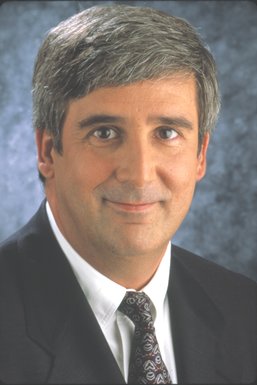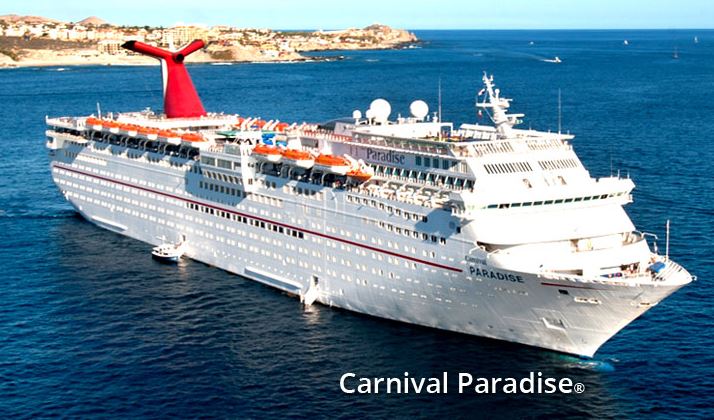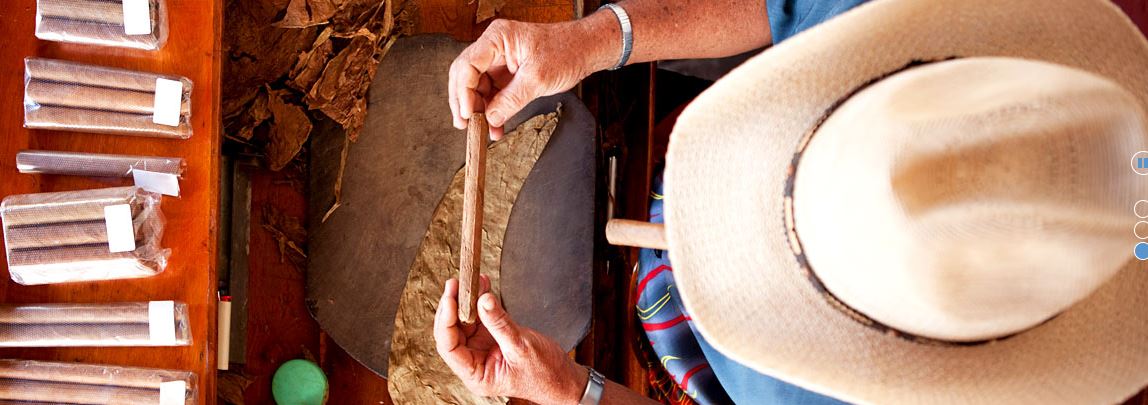Excitement Building as First Cruise to Havana Nears
|
By GERRY BARKER
North Palm Beach Life June 29. That's a date that Terry Thornton, Carnival Cruise Line's Senior VP of Fleet Deployment, has had circled on his calendar for a long time. That's the day Carnival Paradise departs Tampa for Havana, Cuba, the first of 12 scheduled departures to the Caribbean destination that's been off-limits to Americans for half a century. "It's been a long process," said Thornton, "a learning experience for both the Cuban government and Carnival. Good things take time, but they're worth it." Those negotiations started over a year ago, and involved both Cuba and the U.S. government. Thornton noted that while the Obama Adminstration eased travel restrictions, the U.S. embargo is still in place. "As we ramped up, we had to make sure we were in full compliance with the U.S. government," he said. "We had to study the rules, have discussions and make sure we do it right from the very beginning." The job was made easier thanks to the ground-breaking work done by one of Carnival's sister companies, Fathom, created to offer guests a more immersive local experience. Fathom's Adonia became the first ship to visit Cuba under the new rules, in May, 2016. "They had done a lot of legwork on all the rules, documentation, what was needed, how you do things and who you talk to," said Thornton. "We also learned a lot about their shore excursions and how their guests reacted -- what they liked and didn't like, and what adjustments they made. It was an amazing head start for us." Why Tampa, and why Carnival Paradise, a Fantasy-class ship launched in 1998? "Tampa was a perfect fit," Thornton said. "We are very excited about Tampa because it has a very interesting history with Cuba." He noted the historical district of Ybor City, a hub for the cigar industry since the 1880s, along with Tampa's Cuban-American population. "We elected to go with the Paradise because the pier we utilize in Havana cannot take very large ships. Our Fantasy-class ships are perfectly suited for our first calls into Havana. They are the right size (accommodating 2,000 guests at capacity) and have great features. People will have a great time - no doubt about it." While exciting, a visit to Cuba comes with a unique set of regulations and protocols, all of which Carnival has done its best to streamline. So what can guests expect when they arrive in Cuba? "There's a very organized process set up as guests come ashore," Thornton said. The first order of business is exchanging their currency to the Cuban Convertible Peso (CUC). It's just about the only way to make purchases since U.S.-based credit and debit cards are not accepted. (And even if they were, very few merchants have the necessary card processing equipment.) Currency exchange booths are in the terminal, and the exchange rate is one-to-one, along with a transaction fee in the 3 percent range. It is also mandatory for all guests to have a passport. While many destinations in the Caribbean accept birth certificates, Cuba requires a passport. Visitors entering the country also must have a tourist visa. Thornton said Carnival will sell the visas for $75, charged to the guest's onboard account. An alternative would be to obtain a visa at the Cuban embassy, but that could cut into your vacation time. Cuba also has very specific requirements for Cuban-born guests, even if they are currently U.S. citizens, depending on when they left Cuba. They can get the necessary documentation from the Cuban embassy or utilize an online travel service. Additionally, Cuba requires that visitors purchase health insurance. It's $5, and provides access to Cuban medical facilities if needed. What about the rules on the U.S. side? Thornton said there are 12 approved reasons that a U.S. citizen can visit Cuba, and visitors must complete an affidavit that affirms their visit meets one of those 12 reasons. "Approved reasons include culture, the arts or visiting a family member," Thornton said. "But most of our guests will fall under people-to-people experiences, loosely defined as an eight-hour day of activities." While guests can pursue those activities on their own, Carnival offers 14 different shore excursions that already meet the U.S. requirement. Ranging in price from $55 to $160, they offer a wide range of things to do, including seeing the sights in a classic car from the Sixties to sampling the rich Havana nightlife. "The Tropicana show is spectacular," said Thornton, "and really takes you back in time." "What's not permitted is to sail to Cuba on the Paradise and spend the day at the beach," Thornton continued. "That is not an approved activity." "There is no shortage of things to do, and Havana is a very safe environment." Of the 12 cruises set so far, eight are 4-day, weekend cruises and four are 5-day cruises that add either Key West or Cozumel. All include an overnight stay in Havana. All the cruises are this year, except one, scheduled for May, 2018. "We have applied to the Cuban government for additional calls in 2018 and 2019 and are awaiting their response," Thornton said. There are staterooms still available, and "we are very pleased" with the response. "Everything is going exactly as we hoped." Looking ahead, Thornton believes "This is just the tip of the iceberg in what the potential will be over time. We want to add more ports than just Havana. There are larger piers available in Cuba but right now they are not permitted to be used for cruise ships." Launching Cuba has been a career highlight for Thornton. "I have worked for Carnival for 30 years, and this is one of the most exciting things we've ever done, for us and the guests." |
This is just the tip of the iceberg in what the potential will be over time." People will have a great time - no doubt about it." Shore excursions ... offer a wide range of things to do, including seeing the sights in a classic car from the Sixties to sampling the rich Havana nightlife." _________________________________________________
About Terry ThorntonTerry Thornton’s background in the cruise industry spans more than 35 years beginning with financial and marketing positions at Norwegian Cruise Line from 1977 to 1982.
For the next five years, he played an integral role in the launch of luxury cruise operator Sea Goddess, where he was a co-founder and served as chief operating officer. Thornton then served as vice president of finance for Windstar Cruises for two years until joining Carnival Cruise Line in 1989. In 1989, Thornton joined the Carnival marketing team as manager of special projects. He was promoted to director of marketing planning in 1990 and named vice president two years later. In 2008, he was promoted to senior vice president – marketing planning and two years later was named senior vice president – itinerary planning. Earlier this year, Thornton was named senior vice president – international, responsible for overseeing all of the line’s deployment outside the US, A resident of Pinecrest, Fla., Thornton earned his bachelor’s of science degree in finance from Miami University of Ohio. |



